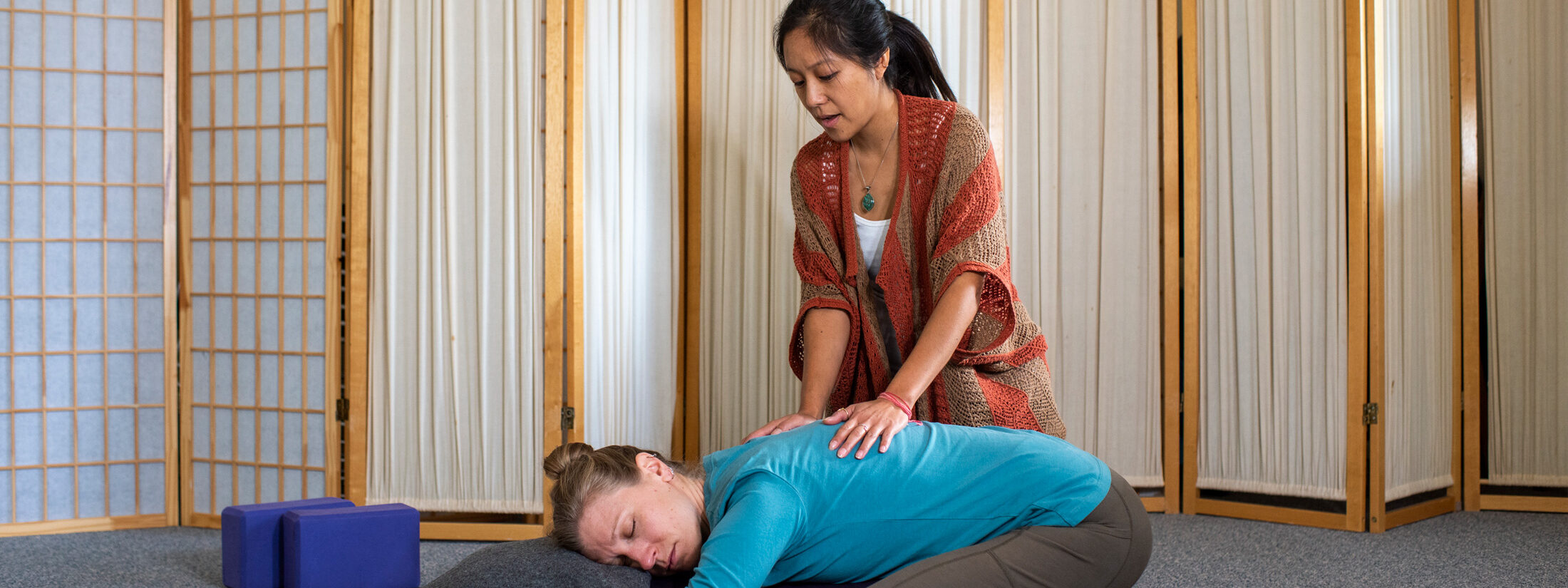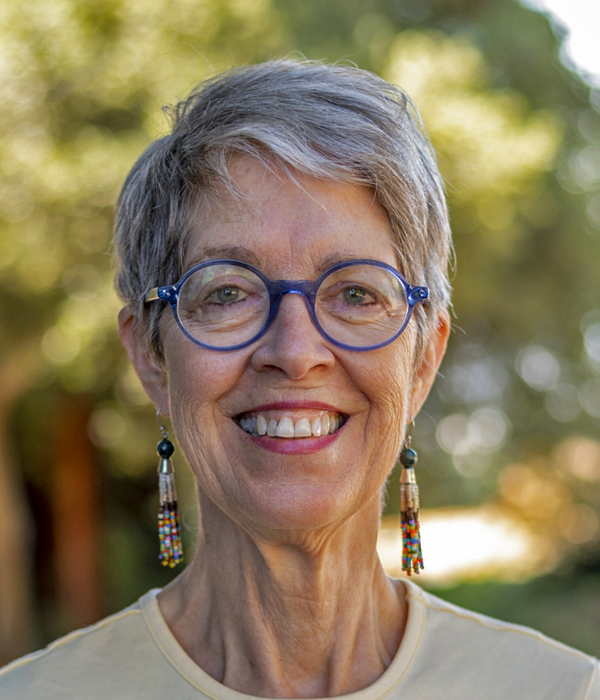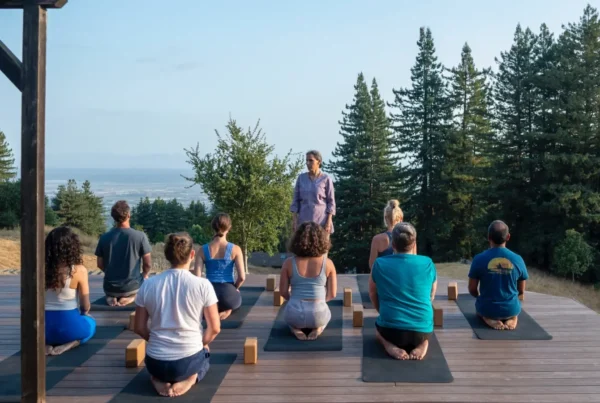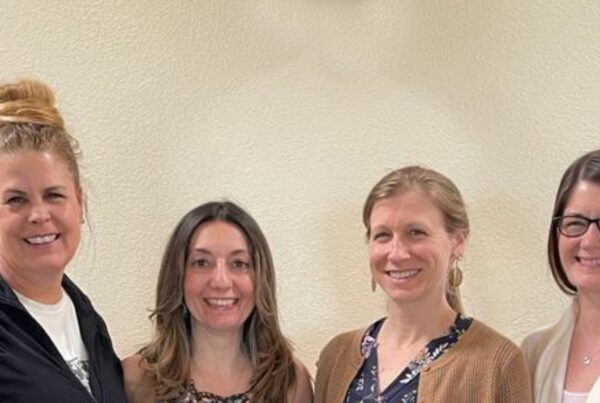Around ten years ago, when I first approached my teacher about Mount Madonna Institute starting a yoga therapy program, he laughed. Baba Hari Dass, a silent monk for over 50 years, had a hearty laugh and was quick with his mini whiteboard. “All yoga is therapy”, he wrote. “Yes, Babaji,” I continued, “but this is different. This would be doing what you’ve been doing for decades, tailoring the yoga practice to the particular student, working one-on-one.”
Babaji himself had received prescriptive yoga practices from his teacher, Raghubar Dass, tailored specifically for him. He himself had experienced the transformative potential of complementing yoga practice with the healing powers of Ayurveda, and he knew the power of precisely applied yogic practices to create harmony and balance in individuals.
I was learning, little by little, that Babaji had adjusted the yoga practices of many of his students over the years to suit them individually by applying the principles of Ayurveda including accommodating their particular lifestyle and addressing their doshic balance/imbalance.
Baba Hari Dass came to the US in the early 1970s at the request of a few students who had met him in India. By 1978 he had so inspired a group of spiritual seekers that they founded a center in the Santa Cruz Mountains of California for the study and practice of yoga. Babaji, who was firmly rooted in the study of both yoga and Ayurveda, began to teach weekly Ayurveda classes as a companion to his weekly classes in Yoga Sutras and weekly classes in pranayama and meditation. As he did not have time to train Ayurvedic practitioners or treat all those who asked, when his students requested additional Ayurveda classes, Babaji invited Dr. Vasant Lad to Mount Madonna to share his vast knowledge of the sister science of yoga. Soon after, In the early 1980s Babaji invited Dr. Raghuvir Prasad Trevedi to come from India to hold the first Ayurvedic training.
The ancient practices of Yoga did not start out with large group classes with everyone instructed to do the same thing. Most yoga practices are not one-size-fits-all but need to be adjusted to an individual. Traditionally yoga was passed down in the gurukula format, wherein the student usually lived with the teacher and learned by example as much as by word. While students may have gathered together for philosophy and theory classes, they worked on their assigned practices alone. Progress was slow. Some students practiced a particular asana (pose) or a pranayama (breathing practice) for years before moving on to another phase of their practice. In India, the birthplace of yoga, all yoga teachers would have known the principles of Ayurveda, and all Ayurvedic practitioners would have known and used the limbs of yoga as treatments for their patients.
Under Babaji’s tutelage, my training in teaching yoga was to examine the yoga practice’s Ayurvedic effect on the body, the breath and the mind. Where was the energy of the asana directed? Where was pressure placed? Why could the same shat karma (cleansing practice) clear up one person’s sinus blockage and yet create pressure and pain in another? Why could the same style of meditation bring about balance in one individual, while causing an imbalance in another? Why could the time-of-day of practice lead to a peaceful experience while a different time-of-day lead to frustration? Babaji explained to me over many years that if I truly wanted to learn yoga to teach it, I had to study Ayurveda. So I dove into the depths of this ancient holistic sister-science to explore what Ayurveda could teach me.
Yoga Therapy & Philosophy
All Vedic sciences are rooted in classical texts, which explain their underlying philosophy. Both Ayurveda and Yoga arise from an ancient description of creation, Samkhya, which explains both higher consciousness and nature, as well as their mutually supportive roles. While there are many foundational principles of this classical text, for our purposes, let’s look at just a few.
Cause and Effect
Sadkaryavad is the first, the principle of cause and effect. For everything that exists in the universe, there is a cause. If we can find the cause of a malady, and can remove the cause, we create the opening for the person to come back into balance and heal.
Microcosms of the Macrocosm
Next, let’s consider loka purusha siddhanta: we are microcosms of the macrocosm. Everything that we find within ourselves can be found in the universe; everything in the universe can be found within us.
Underlying that understanding is the panchamahabhuta theory, the principle of that everything that exists in the universe is made up of Five Great Elements: Space, Air, Fire, Water and Earth. These elements have inherent qualities, and once we know the qualities of each, we can use the principle of samanya vishesha siddhanta or “like increases like; opposites decrease” to bring about balance, healthy, harmony and healing in our mind-body complex.
5 Elements and Ayurvedic Healing
As these are so important to Ayurvedic healing, let’s look at the five elements that make up our physical universe:
- Space or Ether: the principle of emptiness. That in which all creation takes place, that which holds up creation. We see space around us in our homes, our continent, our universe. We recognize space within us, space in each cell, space in all of the orifices of the body. The qualities of space are subtle, light, clear, soft.
- Air: the principle of movement. We know a light breeze can move the leaves on the trees or a powerful hurricane can lift them up by the roots. We see the effect of air in our digestive tract, moving the food along, in the circulation of our blood, in the movement of our eyes. The qualities of air are dry, rough, cold, mobile, light, subtle.
- Fire: the principle of radiance/heat. In our world, we see the sunlight, feel the heat of a lightbulb and enjoy foods cooked over a flame. In our bodies, we note the metabolic fire of digestion, the fire in the eyes, the warmth of the skin. The qualities of fire are hot, clear, sharp, light, dry, subtle, spreading.
- Water: the principle of liquidity. Around us we see liquidity in the oceans, rivers, streams and rain. Our bodies are filled with liquid: interstitial fluids, blood, lymph, tears, saliva, urine. The qualities of water are liquid, heavy, cold, dull, soft, oily, slimy.
- Earth: the principle of solidity. We find this around us in the rocks, the trees, the minerals, metals, any and all building blocks. Inside us it’s our bones, muscles, tendons, ligaments, cartilage…our physical structure. The qualities of earth are gross, dense, static, heavy, cool, dull, hard.
Practical Ayurveda: Therapeutic Tools for Working with Energy
How do we apply this Ayurvedic knowledge in practical terms? Remember the principle “like increases like and opposites decrease”?
Let’s say you are feeling ungrounded, flighty, anxious, unable to make a decision. Those qualities come from excess air element. You need to balance air with earth and water. (Yes, think mud!) For example, for your asana practice, instead of a standing, flowing series of poses, you may need a slow, strong hatha practice with plenty of seated poses. For pranayama, instead of skull shining (kapalabhati), which consists of short, forced exhales, you might try a slow, long exhale (dirga rechaka) or even reclined abdominal breathing. For a meditation practice, you might choose a mantra to tether the mind by constant repetition rather than an awareness meditation where the mind has a tendency to run away like wild horses. If you were to add all three grounding practices, you would be much more likely to rebalance the air element in the mind-body complex and thereby reduce anxiety and increase stability.
What if you are feeling frustrated and angry with the world? That is excess fire element. You want to stay away from the heated classroom and consider a practice by moonlight or when the sun is rising or setting, not when the sun is high in the sky. For asana, instead of a power class, choose something soft, gentle and restorative. For pranayama, consider sheetali or sitkari (cooling) breaths over ujjayi which can be very heating. For meditation, you might contemplate love at the heart center with the mantra aham prema, I Am Love. Practices that can cool you down will have the effect of reducing fiery heat and its expression in the mind-body complex.
Imagine yourself stuck. What if you can’t get out of bed? That is a sign of too much earth element. So revisit the qualities of earth (gross, static, heavy, cool, dull, hard) to see how you can bring about balance. Instead of cold, you want heat; this would be a time to consider a heated classroom. Instead of staying in place (static), you want movement. For asana, think about a flow class. For pranayama, contemplate bhastrika (bellows breath) which is heating and mobile. After a short savasana (corpse pose), you might consider a walking meditation. Adding these practices that increase mobility will decrease the dense and static qualities of earth and lighten the mind-body complex.
Our Individual Yoga Practice
Our yoga practice should suit us individually, evolve over time and be appropriate for the present state. A practice that suits you in your 20’s may no longer be appropriate when you turn 40. To continue in the same practice, year after year, without modifications or changes will only lead to imbalance. Kala (time) has its effect on the mind-body complex and whether we like it or not, the ratio of the five elements changes and our practice needs to change with them. With the help of an experienced yoga therapist, you can determine what works best for you now. Working together you will take into account the space in which you practice, the time of day, how much time you have, your age, your state of balance or imbalance.
While group classes are wonderful for inspiration, community, and learning, a daily home practice will sustain you throughout your lifetime, changing and adapting it as the need arises. You want to make sure that you have your foundational practice, your “daily minimum requirement”, be it asana, pranayama, meditation, mantra or simply practicing being a good person. Design this practice around your goals in life. Everything else is a bonus.
All Yoga Can Be Therapeutic If…..
All of yoga can be therapeutic if applied through the lens of Ayurveda. These ancient Vedic sciences have been interwoven since the beginning. Babaji explained, “Ayurveda is to free the mind which is trapped in the body. Yoga is to free the soul which is trapped in the mind.” Together they form a powerful tool for health, healing and self-realization.





